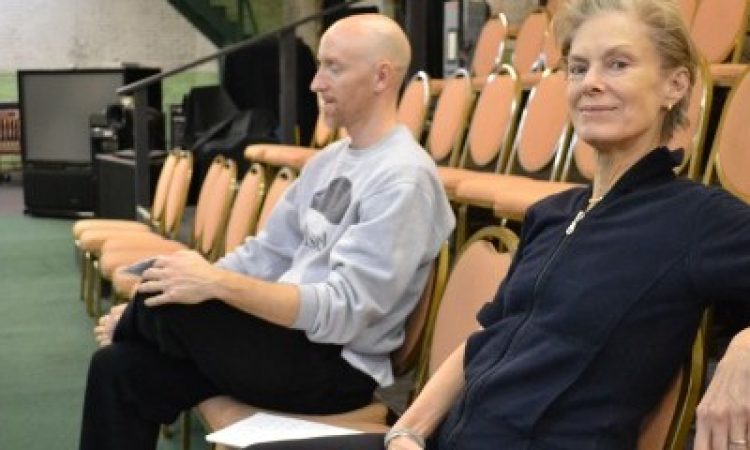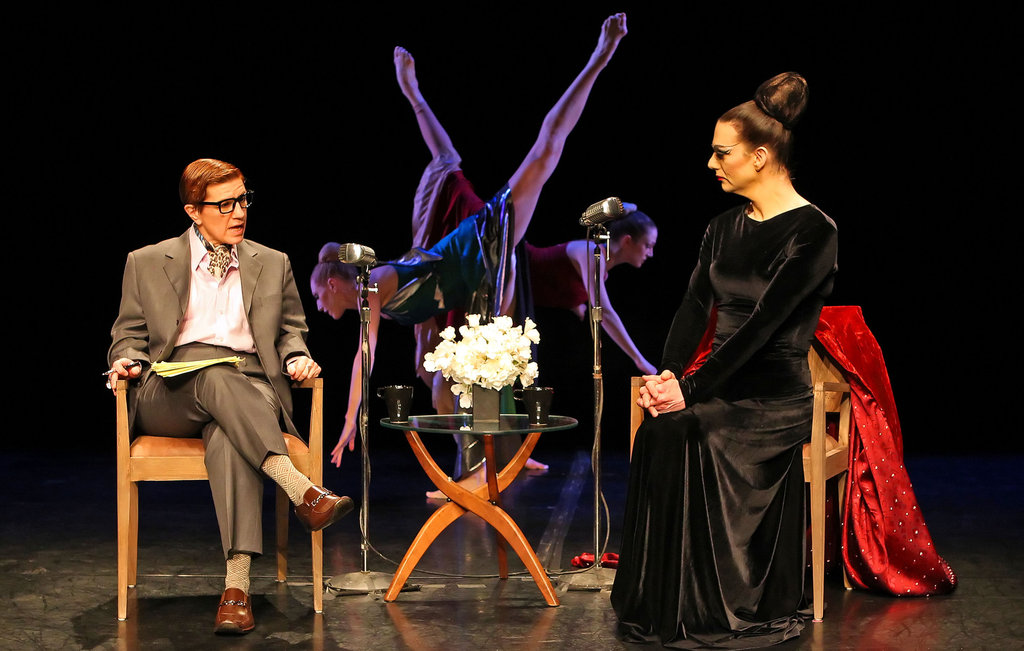Working as a professional dancer for a living wage is increasingly rare in today’s cultural funding climate. In Philadelphia, much dance funding is provided by The Pew Center for Arts & Heritage through Dance Advance*, an organization which stipulates minimum hourly pay rates for dancers in the budget section of its grant application. There is stiff competition among Philadelphia dancers to land a Pew-funded project; along with four others (Marie Brown, Bethany Formica, Nora Gibson, and Annie Wilson) I am involved in such a project now. I’m a full-time dancer for three weeks, getting paid to take technique class from Ty Boomershine every morning and rehearse with choreographer Lucinda Childs each afternoon, learning two of her 1977 works: Melody Excerpt and Interior Drama.
Many know Childs for her role as a member of Judson Dance Theater. But it’s her minimalist works, notably her collaborations with composer Phillip Glass(Einstein on the Beach and Dance) that catapulted her out of the 1970s experimental dance scene in New York and into the role of a major international artist. According to Childs, “Judson was an important era for me. I employed a lot of the same ideas in my later work, limiting myself to very simple movement, but I eliminated the use of props and monologues.” The Judson choreographers all followed their own post-Judson paths, continuing to define the genre of post-modernism in dance and branching out into new forms (Steve Paxton and contact improvisation, Childs and minimalism). Alan Riding of The New York Times explains, “Childs is revered across Europe as a grande dame of American dance. In the United States, though, her work is so rarely seen that she has assumed almost mythical status.”
Many of Childs’ works from her post-Jusdson period, like the ones I’m learning now, are set in silence, and their written scores have been exhibited in their own right as visual art. “Young makers today who are influenced by what they perceive to have been Judson are thrown off by the austerity of Lucinda’s later works,” said Ty Boomershine in a conversation during our rehearsal break. The works are minimalist in the purist sense — their movement is simple and repetitive, concerned not with expression but with form, pattern, and the negotiation of bodies in space.
Interior Drama consists of four movement segments: a simple, quick foot pattern in eight counts, and a turning sequence, walking backwards, and a slightly more complicated turn in place, each in twelve counts. The segments link together in different orders to form three distinct phrases, which are named in the score as 1, 1A, and 2. Each phrase is exactly the same length — 160 counts. The five dancers are divided into a group of three and a pair, group A and group B, which repeat phrases 1, 1A, and 2 fifteen times; each group has a different order. The work is complicated and formulaic. The title of Interior Drama is somewhat ironic, given the work’s abstract formalism. On the other hand, trying to hold this dance together creates its own drama…if one of us becomes distracted for a second, the whole work can fall apart. I remember hearing Childs talk about Interior Drama during her visit to Philadelphia last year. She said that for her, movement as simple and uniform as this really highlights the humanity and individuality of each dancer. In this way, I think one gets the sense of watching a community of people working together to execute something physically draining, mentally taxing, but with the same end satisfaction as placing the final piece in a jigsaw puzzle.
Melody Excerpt is equally challenging. Its movement consists of three phrases, each ten counts, of skipping, hopping, and turning. The movement is organized into 167 “figures,” as Childs calls them, each figure a different instantiation of the 10-count phrases distributed across our five dancing bodies. The dance unfolds in a total of 1670 counts in which no single figure repeats exactly the same way. We get much more winded in this one, and have a hard time keeping track of the spatial patterns. Drilling the piece and rote memorization seem to be the best strategies for hanging on. We make little songs for ourselves to try to remember our individual sequences. Childs has woven surprising intricacies through both works, complexities that reside in the way phrases of movement overlap and the way dancers shape space and time with their commitment to the unfolding of a series of moves.
Childs’ work has been characterized as post-modern and minimalist; my experience of it has been more in the realm of endurance art. Okay, dancing Interior Drama‘s 2400 counts, which takes about 15 minutes, is no Five Day Locker Piece.** But the process of reconstructing these works, with all their repetitive bouncing and jumping, has left most of us with some minor (and one or two major) aches and pains.
Childs knows this about her work. At 71, her elegance and stature are perhaps intimidating to some; she approaches her ideas and her work with rigor and intensity. After a few encounters it becomes clear that her coolness is more of a concealed shyness, and Childs makes a lovely, candid, and supportive rehearsal director. Constantly admonishing us to “get off your feet!”, she is well aware that the repetitive nature of the movement takes its toll on the body. Our first week of rehearsals commenced under the supervision of Childs’ assistant, Ty Boomershine. Encouraging and up-beat, Boomershine is decidedly more of a task-master than Childs herself. Throughout the rehearsals, we’ve been careful to progress slowly, adding material bit-by-bit, lest our brains become overloaded. And as we are rehearsing longer and longer sections, we are running them less, trying (and not always succeeding) to avoid the risk of injury through too much repetition.
Working so closely on this project with Childs is indeed a privilege, a challenge, and a test of our mental and physical endurance as professional dancers. The works themselves fascinate, just as they did 25 years ago. Their endurance is a testament to the staying power of genre-defining work in an ever-changing cultural climate.
Lucinda Childs: Work(s) on View, Performance Garage, November 11, 5pm. Free admission, RSVP by calling Dance Advance
267-350-4970
* Disclosure: This online publication is supported by the Pew Center for Arts & Heritage through Dance Advance.
**In 1971 performance artist Chris Burden crammed himself into a 2X2 foot locker (with a five gallon bottle of water in the locker above, and an empty jug in the locker below, both connected by tubes to Burden’s tiny cell) and stayed there for five days.






